How To Grow Jade Plant – Planting and Growing Ideas
You can grow jade plants from both stems and leaves. They prefer warm temperatures, protection from cold, and a watering session only when the soil feels dry.
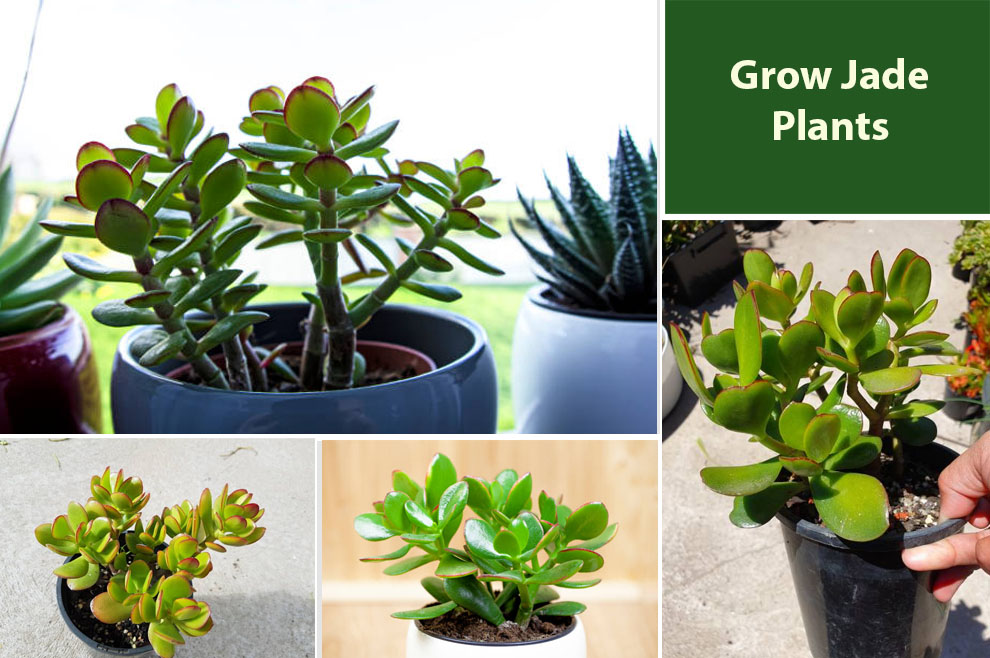
In the 1970s, Jade plants were a rage. Grown in macramé planters, they were the quintessential houseplants mainly spotted in the hanging containers. Today, macramé is back in vogue, and the Jade plants never went out of style. They are forgiving, low-maintenance, and easy to care for, provided you know how to grow jade plants.
With oval-shaped leaves and thick and woody stems, these plants have an alluring small tree-like appearance, making them appealing and ideal as decorative plants. Jades have a long lifespan and are passed down for generations. These succulent trees reach approximately two to four feet if grown indoors.
They do not need a lot of water and can adapt to dry and warm conditions common in almost every home. However, you must water the plant during its growing season between spring and summer. But, let the soil stay dry during the dormant season in winter and fall.
Even in the growing season, you must let the soil dry out completely between two watering sessions because these plants are susceptible to root rots. You can grow the Jade plants as landscape plants or outdoors, provided you grow them in areas with a dry and mild climate around the year.
They grow best in warmer zones like ten or higher. Jade plants are susceptible to cold damage. Hence, if you reside in areas where the temperature drops below freezing point, you must grow them in containers or bring them indoors when the temperature goes below fifty degrees.
Here, we will discuss everything you must know about planting and growing Jade plants.
How To Plant Jade Plants?
Since jade plants grow top-heavy and fall over, you must look for a sturdy and wide pot with a moderate depth. Fill it with well-draining soil because excessive moisture might become a breeding ground for fungal diseases and result in root rotting.
It is ok to use an all-purpose potting mix and add perlite to better the drainage. Keeping potting mix to perlite ratio at 2:1 works best. You can also add a cactus or an exquisite succulent-specific potting mix.
Now, plant your jade plant, but do not water it immediately. Ideally, you must wait for several days to a week before watering the plant. It gives the plant ample time to settle the roots and adjust to the new surroundings.
What Are The Two Ways To Grow Jade Plants?
- Via Stem Cuttings
- Via Leaves
How To Grow Jade Plants From Stem Cuttings?
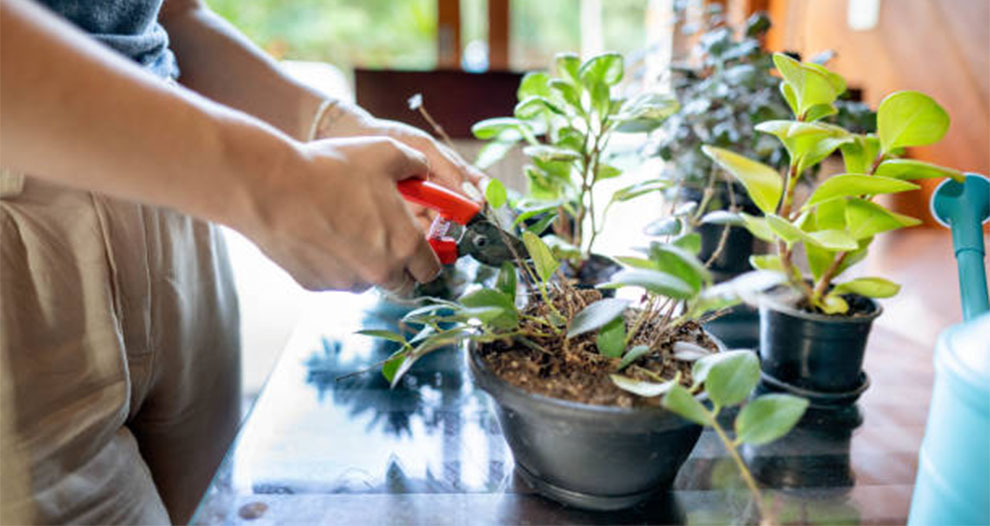
Step 1 – Take a sharp and clean gardening shear and chop a thick stem about three to five inches long, ensuring it has healthy leaves. Now, remove the leaves on the lower end, and put the cutting in a sunny spot for a few days till you start seeing callus that feels firm and lighter in color.
Step 2 – In a small container, add some succulent soil. Carve a thin and long hole in the center.
Step 3 – On the callused stems’ bottom inch, apply a powdered or a liquid rooting hormone to help the roots grow faster. Now, insert the trunk in the pot and pat down the soil till the cutting can stand by itself.
Step 4 – Do not expose the cutting to direct sun for at least three to four weeks.
Once you start seeing new growth, move the plant to a spot near a window where it can get bright sun. Water it sparingly in this while.
How To Plant Jade Plant From Leaf Cuttings?
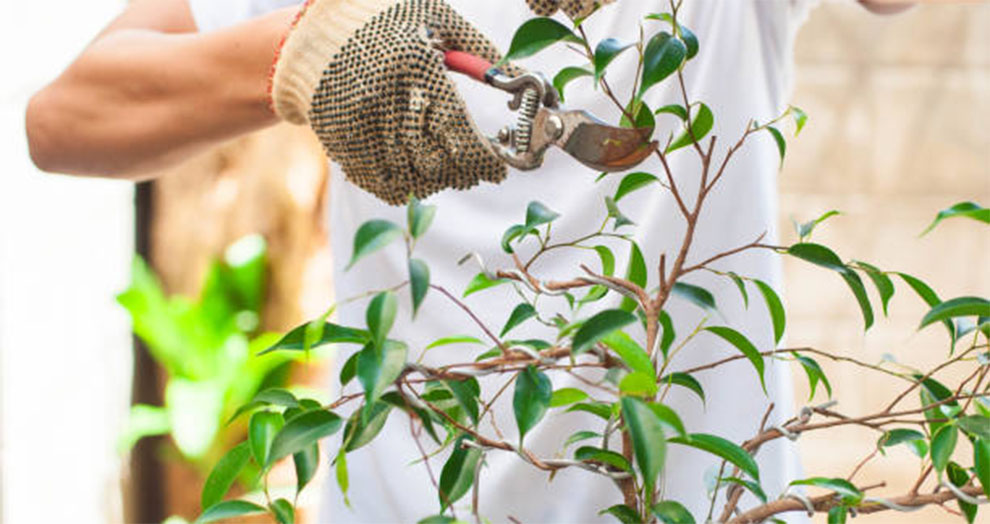
The second way to propagate a jade plant is via its leaves.
Step 1 – Take a sharp, clean blade, and chop a healthy-looking, large leaf from the Jade plant.
Step 2 – Put this leaf in dry succulent soil, away from the direct sun, till you start seeing the roots growing.
Step 3 – Apply a rooting hormone at the leaf’s cut end and add equal parts of vermiculite or perlite and succulent soil to boost growth and lighten soil texture.
Step 4 – Inspect the leaf’s cut end and see if you can spot the tiny roots sprouting.
Step 5 – Move the leaf to a small pot in a fast-draining soil mix like a perlite-sand blend. The new growth shows and the original leaf shrivels completely as the roots establish.
Related: How to propagate jade plants in water?
When Is The Best Time To Plant Jades?
If you seek the best-looking jade plants, you must ensure that you grow them in a spot where they receive full sun during the summer on-set. It helps them achieve succulent and thick, dense leaves.
Ideally, these plants are grown indoors because outdoors the temperature can be fluctuating. Fortunately, you can plant jade anytime indoors at a stable warm temperature.
You can shop for them from a nursery or propagate from an existing plant and keep them near a west-facing or a south-facing window for best results.
How Long Does It Take For A Jade Plant To Turn Into A Tree?
If you expose your Jade plant to the right growing conditions, it will start taking the tree’s shape in another three to four years. However, the tree takes at least six to twelve years to grow up to three to five feet.
How To Grow Jade Plant Faster – Ideal Growing Conditions for Jade
Jade plants are hardy succulents. They have a flourishing and long life if exposed to the right growing conditions and care. Even though some Jade varieties stay dwarf, others can grow up to five feet upon maturity.
But, generally, the care requirements for most jade species are almost the same. Here are some tips that can help.
Do jade plants need big pots?
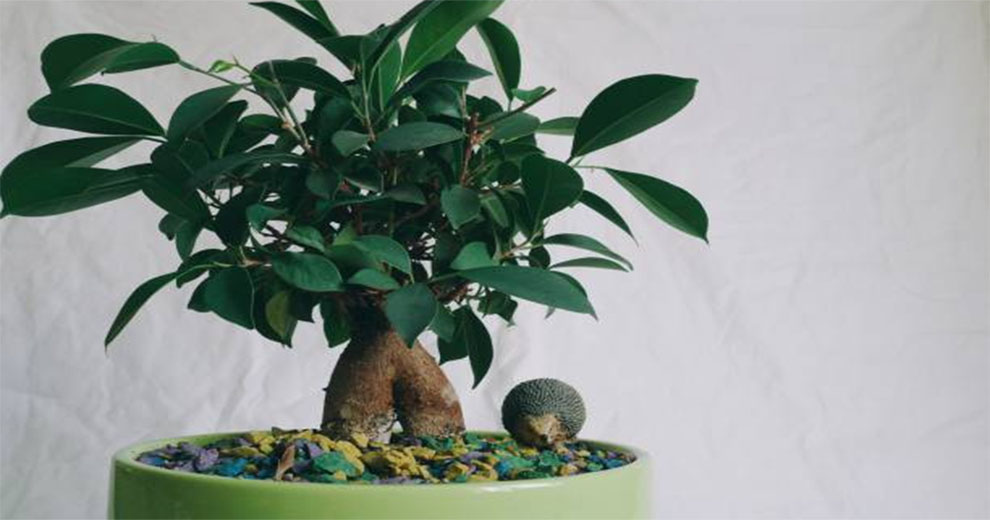
Jade plants are ok with being root bound in a smaller pot. But, if you do not shift the plant to a larger container, it will curtail its height and growth and make them more manageable.
You must consider repotting them every two to three years to foster growth. But, if you have an older Jade, consider repotting every four to five years or as needed. Spring is the ideal time for transplantation. It is when the growing season is about to commence.
Once you repot, you must leave the plant for another week or two. Also, after you move the plant, you must not fertilize it for at least a month because that may burn the plant’s tender roots.
At what temperature do jade plants thrive?
As houseplants, Jade thrives in temperatures between fifty-five to seventy-five degrees Fahrenheit.
You can grow these succulents outdoors only if you reside in USDA hardiness zones eleven through twelve. In this region, consider growing Jade plants as a border, or you can plant them directly into the ground.
Grow your Jades indoors if you live in any other growing zone. You can move them outdoors if the temperatures are way above the freezing point but always bring the plant indoors if the night temperature drops below 50 degrees Fahrenheit.
Even though established specimens can survive a light frost, they mostly languish. Hence, it is best to move them indoors if the colder weather is approaching.
Do jade plants need direct sunlight?
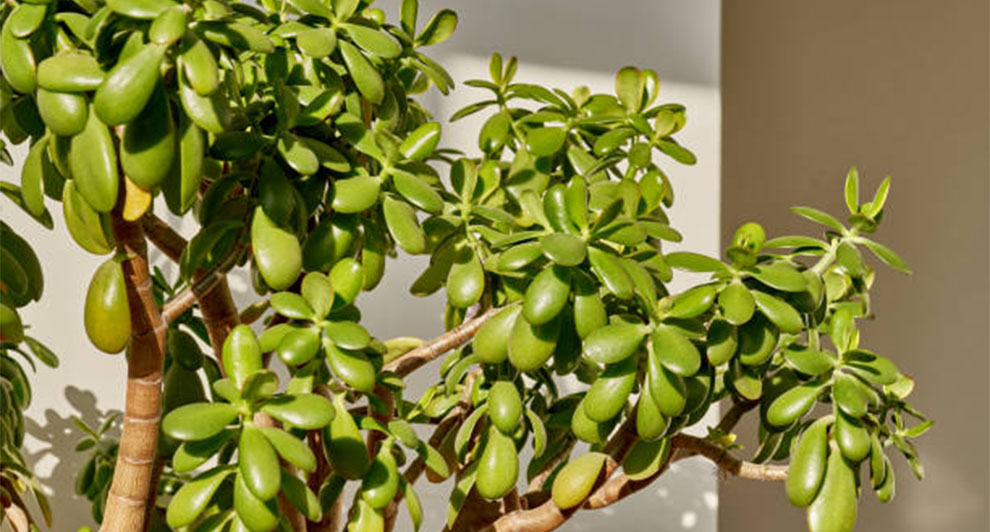
Jade plants demand indirect, bright sun for at least four to six hours daily. It helps them grow healthy and green leaves. If you keep your plant in part sun, it will grow narrow leaves that leave a grayish cast resulting in legging growth.
Hence, we recommend taking your Jade plants outdoors during the summer for them to get ample light. The warmer temperature and this extra sun can do wonders for their growth.
How to plant jade plant in soil?
A succulent-specific mix is best suited for the Jade plants. Also, before planting the Jades, you must perform a soil inspection. The plant prefers well-draining soil with an acidic pH to ensure that it does not hold excess water and keeps fungal growths at bay.
If you employed the all-purpose potting mix over the succulent-specific, you must pour some perlite into it. It will help with drainage. Furthermore, plant your Jade plants in clay or terracotta vessels to eliminate excess moisture from the soil.
Even though it is ok to leave Jade plants in the same container for several years, provided you do not overwater it, it still helps to change the soil every two to four years. It lets you examine the roots and notice any plausible rot or damage.
How often do you water a jade plant?
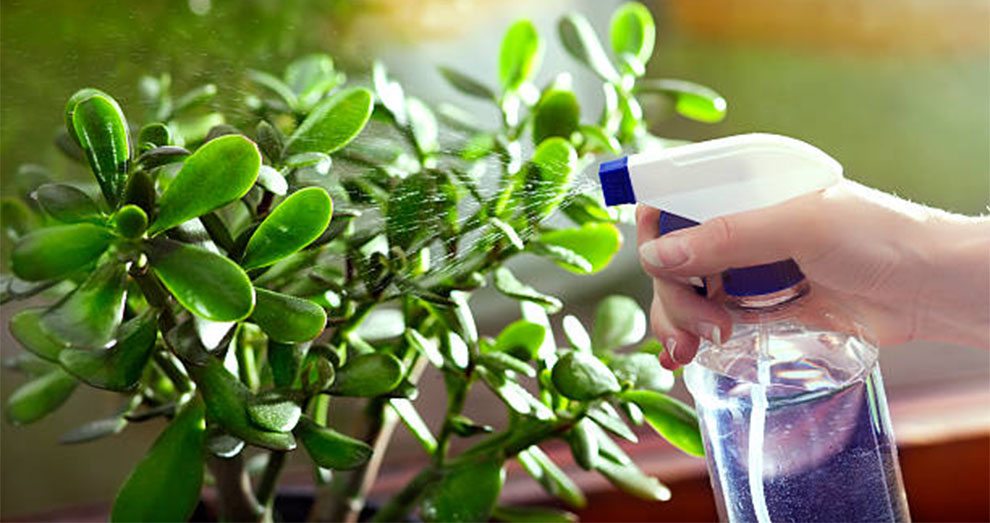
As succulents, Jade plants tend to hold the water in their leaves. So, if you leave them in water for an extended duration, they are susceptible to diseases. Hence, before watering, you must always let the top one to two inches of the soil dry out.
It implies that watering once every two to three weeks will suffice. But, you must continually examine the soil to see if it needs water any sooner. Keep a check on the plant for blisters on the leaves.
If you spot any, you probably overwater the plant. So, take measures to cut back the watering frequency.
If there is rain predicted for the next few days and you have your Jade plant growing outdoors, you must immediately move them into the garage or under the porch to prevent waterlogging in the plant.
The growth rate is slower in the winter, and so is their watering requirement. So you can cut back on the watering frequency further.
Fertilizer for jade plant
It helps to regularly fertilize the Jade plant in its growing season with an all-purpose, balanced fertilizer that can offer the plant nutrients necessary to grow and thrive. Do not overfertilize, as it may result in problems like stunted growth and leaf burn.
Should you prune it?
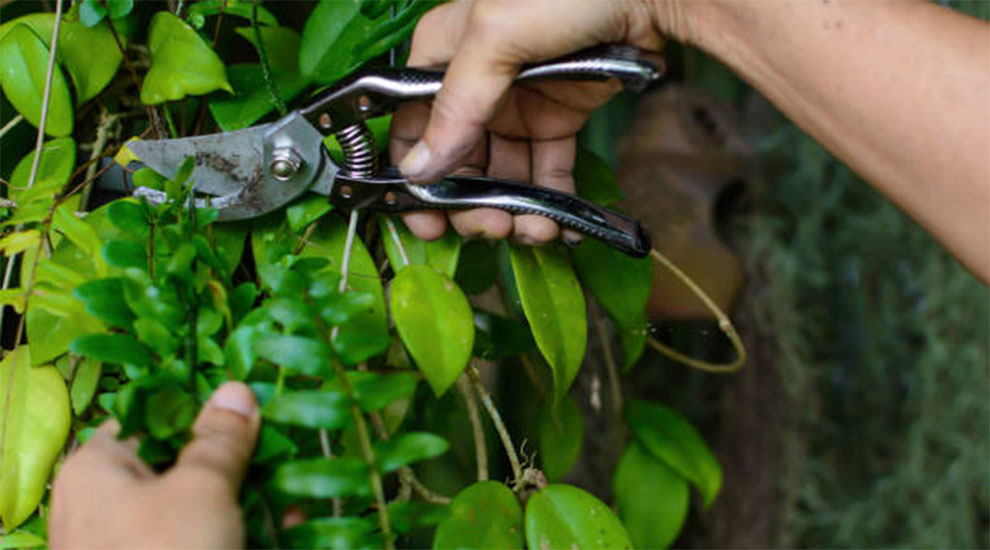
Pruning is vital to maintain the plant’s natural shape. It may also help if you wish to curtail your plant’s height to a bonsai. Since Jade plants tend to preserve the water in the leaves, older plants tend to get top-heavy. The roots may fail to support this excess weight. Hence, pruning can be beneficial.
But never trim the plants till they are at least a year old. Spring and early summer is the best time for pruning as the growing season follows it. However, since pruning makes the plant vulnerable to pests and disease attacks, you must always use sterile pruning tools and prune sparingly. In addition, to prevent tissue damage, the shears must be sharp.
While pruning, do not chop the main stem, as it may kill or severely damage the plant. However, it helps to chop any dropping branches back into the trunk. It will trigger new growth. Further, thin branches boost air circulation and light flow.
What Are Common Problems With Jade Plants?
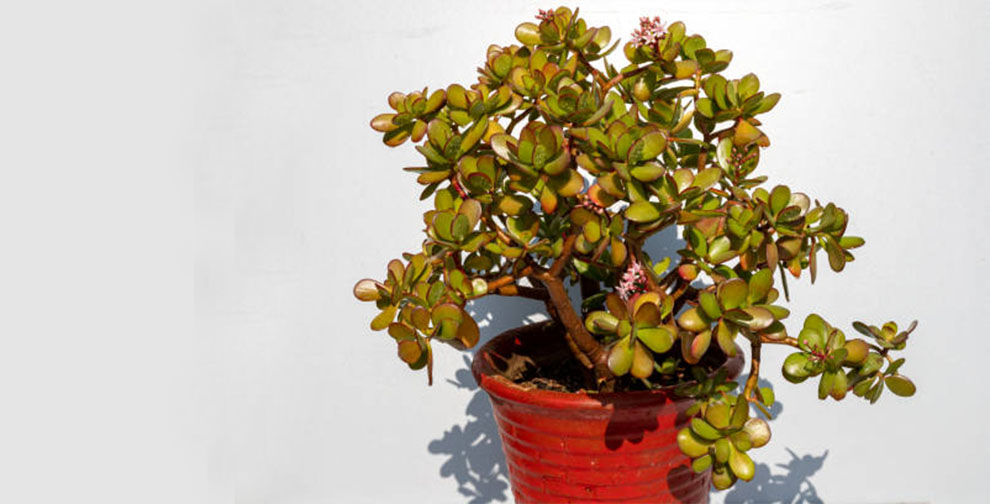
If you follow our instructions above on how to grow jade plants faster, you will never have a problem with the Jade. But if you make mistakes, you put your plant a risk.
Some of the common concerns noted in the Jade plants are:
1. Loss of leaves
If your Jade plants start losing their leaves faster than they should, it possibly implies that your plant cannot avail the light it needs. Thus, you must consider moving your plant to a spot where it can receive indirect and bright light for at least six hours daily.
Also, if the old leaves falling or dropping is accompanied by leggy growth, your Jade plant may be too warm. So, you can consider moving your plant to a cooler spot.
2. Shriveled leaves
Jade plants are succulents. They store water in their leaves. Shriveled and wrinkly leaves imply that the plant cannot meet its watering requirements. It is accompanied by general wilting or dropping. However, you can better your plant’s health by watering it adequately.
3. Yellow leaves
It should not worry you if the plant has one or two yellow leaves. However, if almost all jade leaves turn yellow, it may be a sign of a grave issue and might indicate overwatering. You must inspect the plant for other tell-tale signs like root rot and accordingly alter your plant’s watering frequency.
4. Root rot
If you knew exactly how to plant jade plant, still it does not thrive well, root rot could be the possible issue here. You must immediately repot if you notice squishy, soft, or soggy soil. Do not overwater the jade plants because it will make the situation worse.
5. Pests
Some pests that may infect the Jade plants include aphids, scale, spider mites, or root mealybugs. Depending on the infestation, take proper measures to combat them. Generally, neem oil and insecticidal soaps can help heal from a pest attack.
Frequently Asked Questions
Ques 1. How do I make my jade trunk thicker?
Ans. The simplest way to enable the Jade plant to develop a thicker trunk is by pruning the plant. We recommend leaving some leaves on the plant.
However, trim the plant as much as possible, up to the initial pair of leaves on every branch. It helps you keep your plant short. Hence, it directs all its resources toward keeping its trunk thick.
Ques 2. How do you make a jade plant grow like a tree?
Ans. Growing a jade plant into a tree demands an equal mix of feeding, pruning, training, and patience because the plant takes a while to produce an appealing specimen. Here are the steps if you wish to learn how to grow jade plants into a tree:
1. Choose the right pot – Ideally, a four to six inches container is ideal for the jade plants. But, if you wish to grow your plant into a tree, you must give it more space for the roots to grow. Hence, when the plant grows slightly taller, you must repot it into a bigger pot of about eight to fourteen inches.
But, the container size mainly depends on the plant’s size. You must always pick a pot that is a size or two larger than the current one, as overly huge pots imply more moisture retention and more soil. It may lead to waterlogging, which the Jades hate. Thus, you must only pick a pot that is a size more than the plant’s root ball.
2. Train the trunk – If you wish to grow a Jade tree, you must train it to become one. For this, you must:
- Pick the primary trunk as the main stem and chop all the others.
- Chop the stems that intervene with the primary stem’s growth.
- Trim the plant’s primary half, including the leaves to give it a top-heavy look.
- Offer support to the main trunk via a bamboo stick while the plants become top-heavy.
3. Expose it to ample sun – Jades are succulents. They need a good mix of indirect and direct sun to thrive. But if you can monitor, ensure that the light falls equally on the plant from the top as it makes it grow tall and straight.
If the plant gets sun from the sides, it will begin protruding sideways, traveling towards the light source, and also develop new trunks on the sides. Consider using a stake to offer the plant the necessary support, or else it may grow downwards or sideways.
You want your plant tall and straight. It will ensure the primary stem stays thick and hard.
4. Fertilize well – Consider feeding the plant at least once in its active growing season with a balanced liquid fertilizer diluted to twenty-five percent of its recommended strength. Fertilization can amplify the growth process and help the plant grow faster.
Ques 3. Is coffee good for jade plants?
Ans. Coffee grounds add nitrogen to the soil as they break down, a vital nutrient for succulents. Hence, they are ideal for jade plants.
